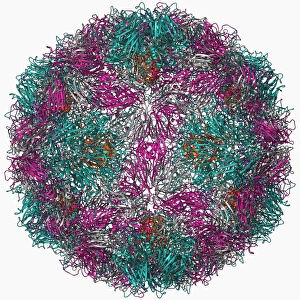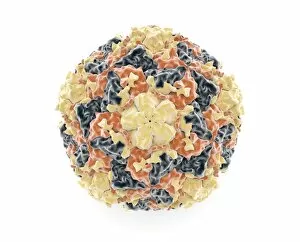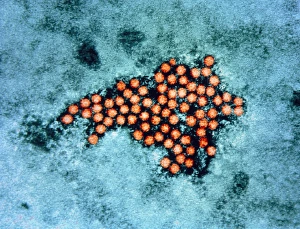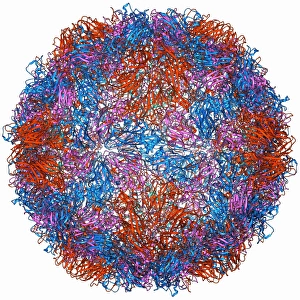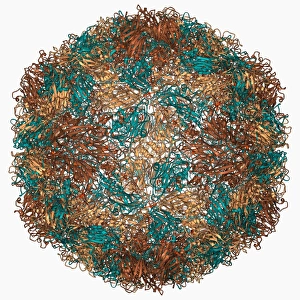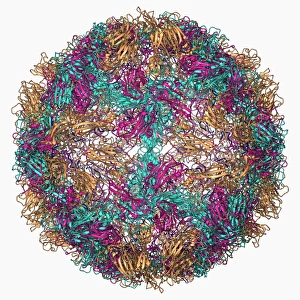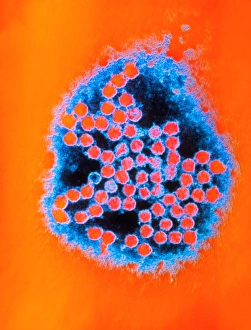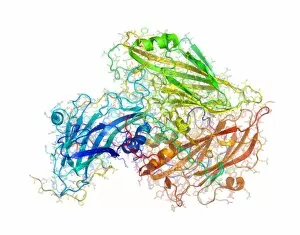Rhinovirus Collection
"Exploring the Intricate World of Rhinovirus: Unveiling its Molecular Structure and Impact on Human Health" In this captivating collection of images
All Professionally Made to Order for Quick Shipping
"Exploring the Intricate World of Rhinovirus: Unveiling its Molecular Structure and Impact on Human Health" In this captivating collection of images, we delve into the microscopic realm to uncover the fascinating world of rhinovirus. From its distinctive capsid structure to its molecular models, these visuals offer a glimpse into the complex nature of this common cold influenza virus. The first image showcases Rhinovirus 16 capsid, revealing intricate details that make up its protective shell. This close-up view allows us to appreciate the beauty hidden within this tiny viral particle. Moving forward, we encounter a colored transmission electron microscope (TEM) image depicting foot & mouth disease viruses. Although unrelated to rhinovirus, it serves as a reminder of how viruses can impact both humans and animals alike. Returning our focus to human health, we witness another TEM image showcasing Human Rhinovirus 16 particle. Its presence in our respiratory system can lead to discomfort and irritation associated with viral throat infections. As we continue our exploration, molecular models take center stage once again. The various representations highlight different strains such as Rhinovirus 14 and their unique capsids. These structures play a crucial role in understanding how these viruses interact with our immune system and cause symptoms like sneezing or congestion during cold seasons. Ultimately, these captivating visuals shed light on the often overlooked world of rhinoviruses – reminding us that even though they may be small in size, their impact on human health is significant. By unraveling their mysteries through scientific research and innovation, we strive towards finding effective treatments for combating these pesky invaders that disrupt our daily lives with common colds and other respiratory ailments.

